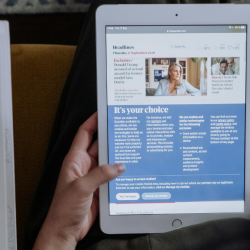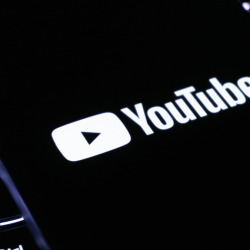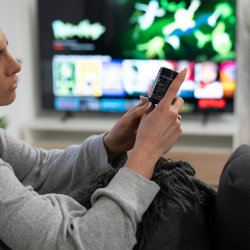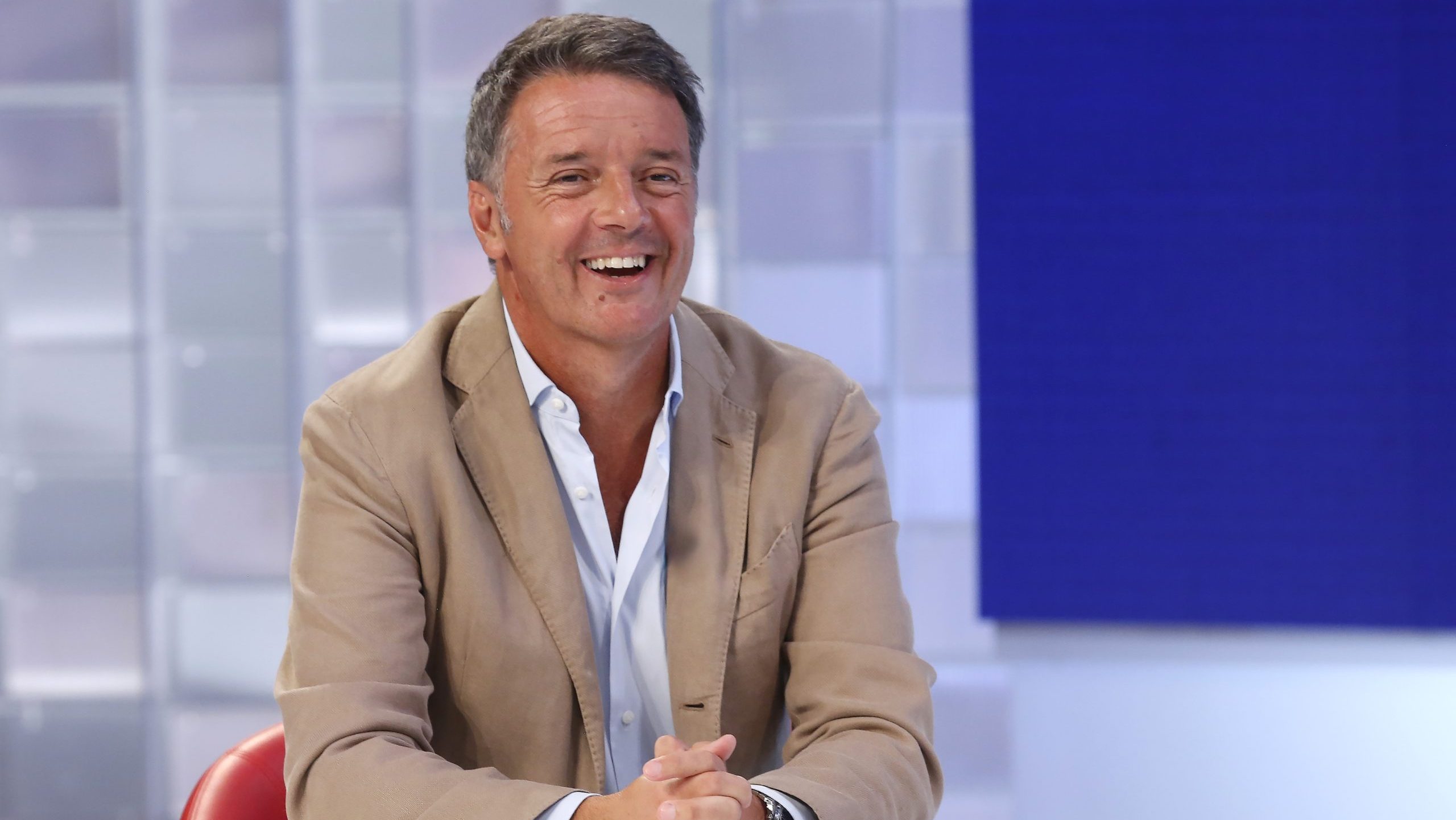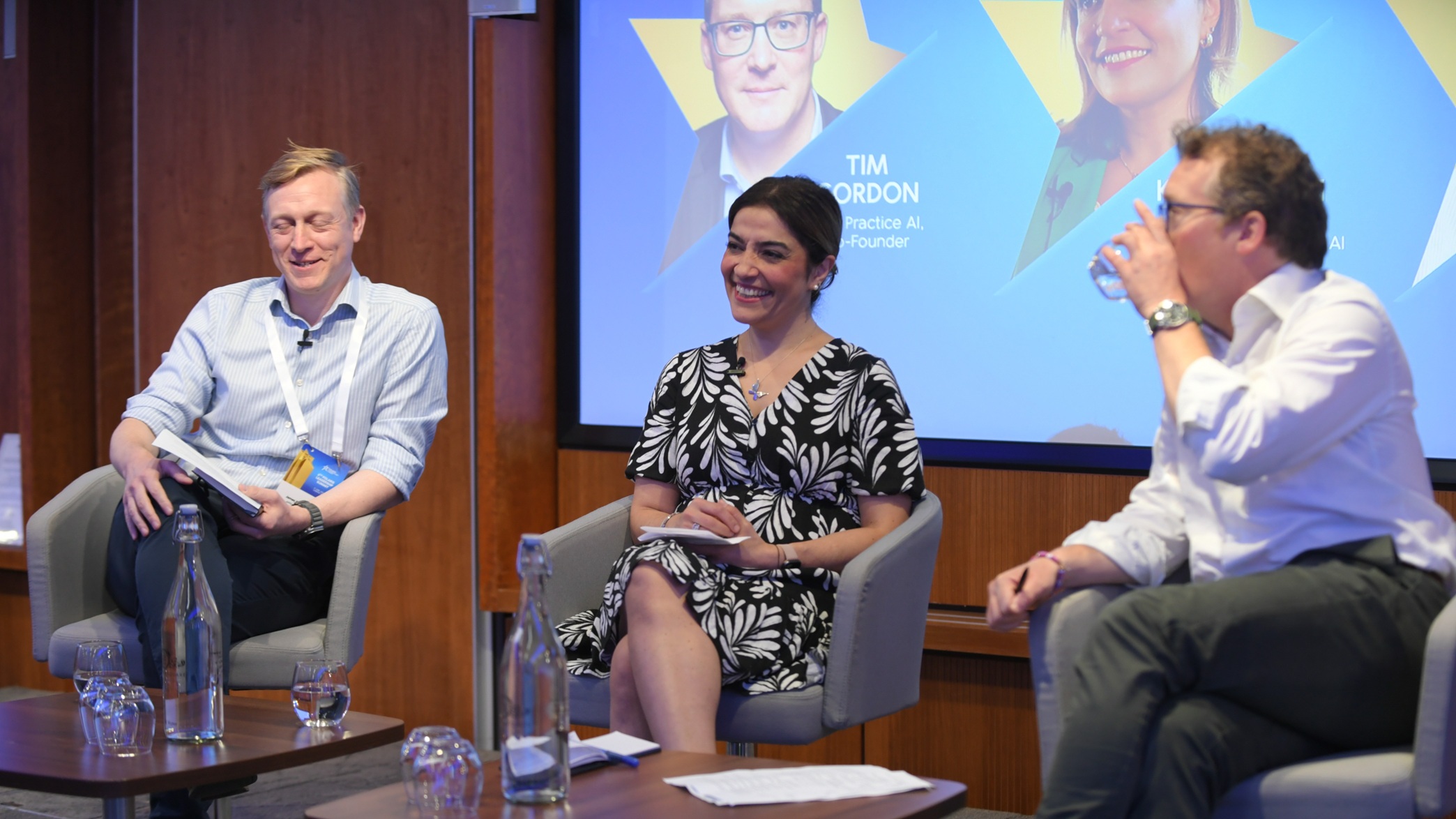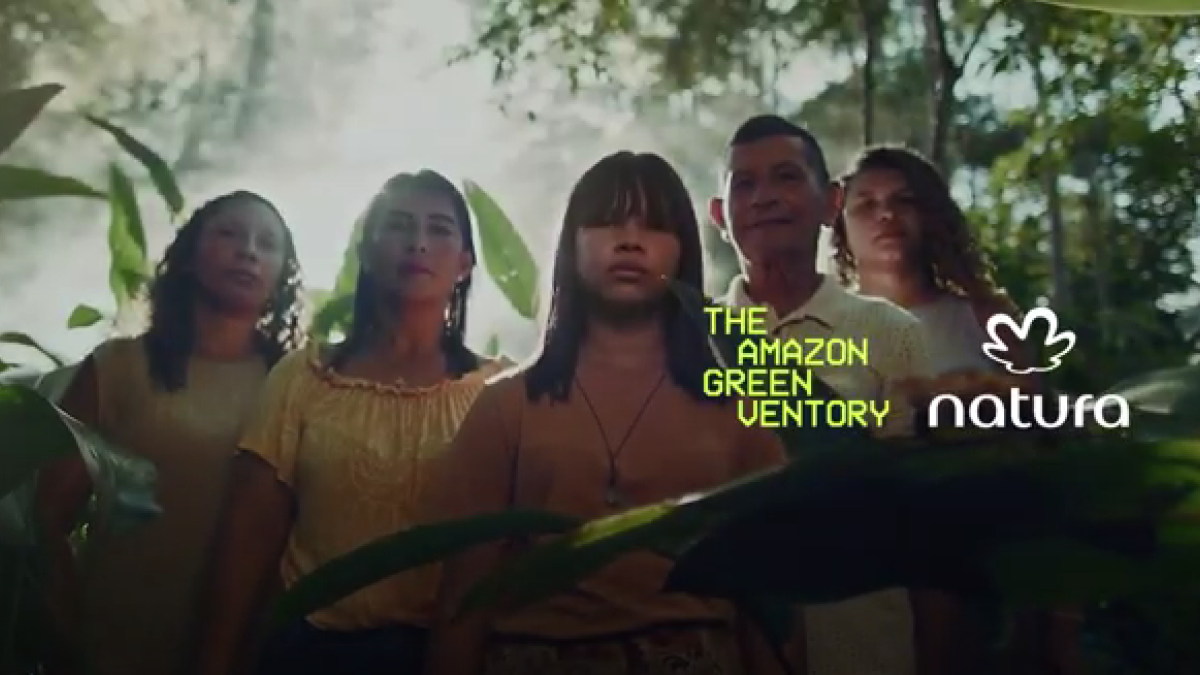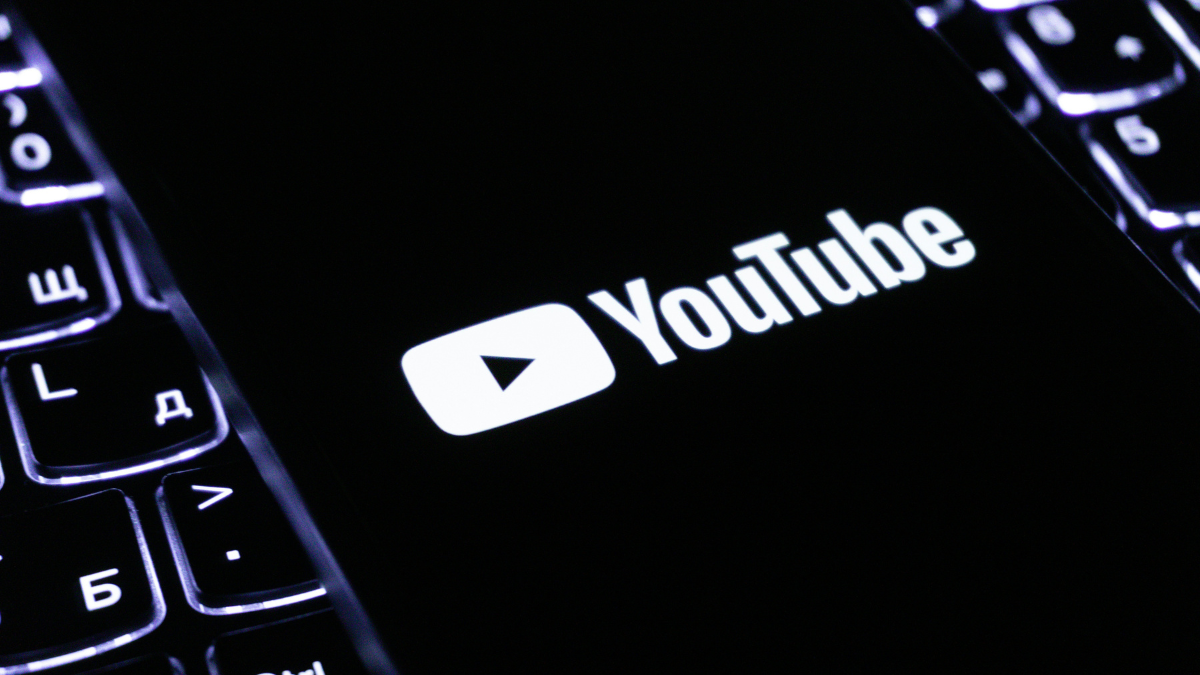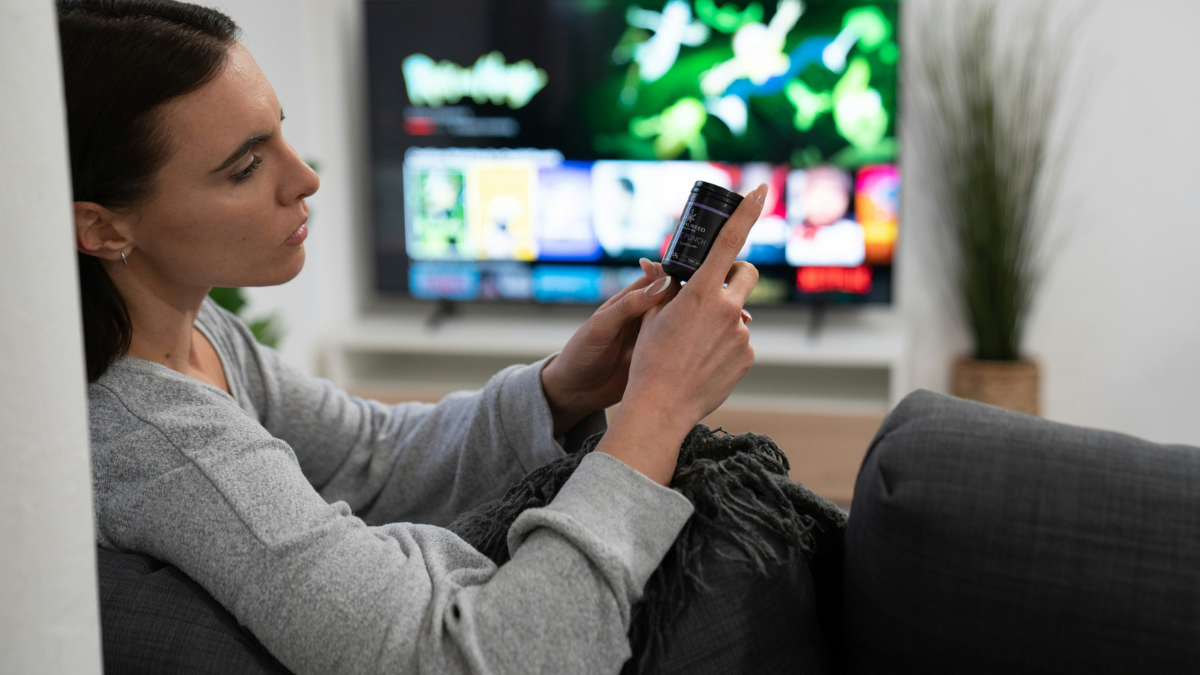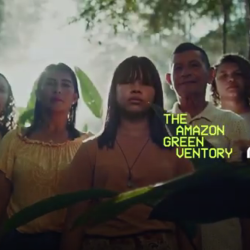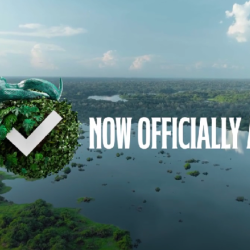An old teacher of mine, Mr Street (anyone remember him?), once spent all lesson telling us how the future was going to roll out.
He was prescient on the rise in popularity of twerking and the emergence of the Swifties, I’ll give him that, but his prediction of The Leisure Society were way off.
He said that machines were going to do all the heavy lifting, leaving us humans to a life of leisure – drinking cocktails in our jacuzzis.
It sounded great.
I was really looking forward to it.
But it turns out that when people are replaced by machines, employers stop paying them.
The assumption was always that ‘machines’ will do things faster, cheaper and better.
Faster and cheaper maybe, but better?
In the creative industries, new tools, through no fault of their own, often lead to a decline in standards.
Take the Mac.
A creative tool so miraculous, even Mr Street could never have imagined it.
Yes, it does things quicker, faster and better.
But because everyone knows that, they expect results in a fraction of the time.
As the process speeds up the thinking time reduces.
Art directors used to have to wait overnight just to see their wobbly, hand-drawn headline set in a font.
Forget commissioning a photo shoot, even using a stock image would take days.
Reference books would be posted or biked to your agency.
You choose an image, then a payment is posted or biked to the stock library.
Once received, the stock library posts or bike a transparency to the agency.
That’s before briefing any retouching.
Checking the Cromalin (google it).
And the test proofs.
Incredibly, this was 1990, not 1890.
Everyone knew this, so it was factored into briefing.
The benefit of painfully slow process was that thinking time was inbuilt.
You could now create a billboard from idea to delivery in 10 minutes today.
It’ll be bad, but you could do it.
Why bad?
You wouldn’t have had the time to absorb the brief.
Think around it.
Create some bad ideas.
Bin them.
Create better ones.
Simplify the image.
Reduce the word count.
Think about how it should look.
Commission a photographer/illustrator.
Step back.
Adjust.
Improve.
Refine.
Press send.
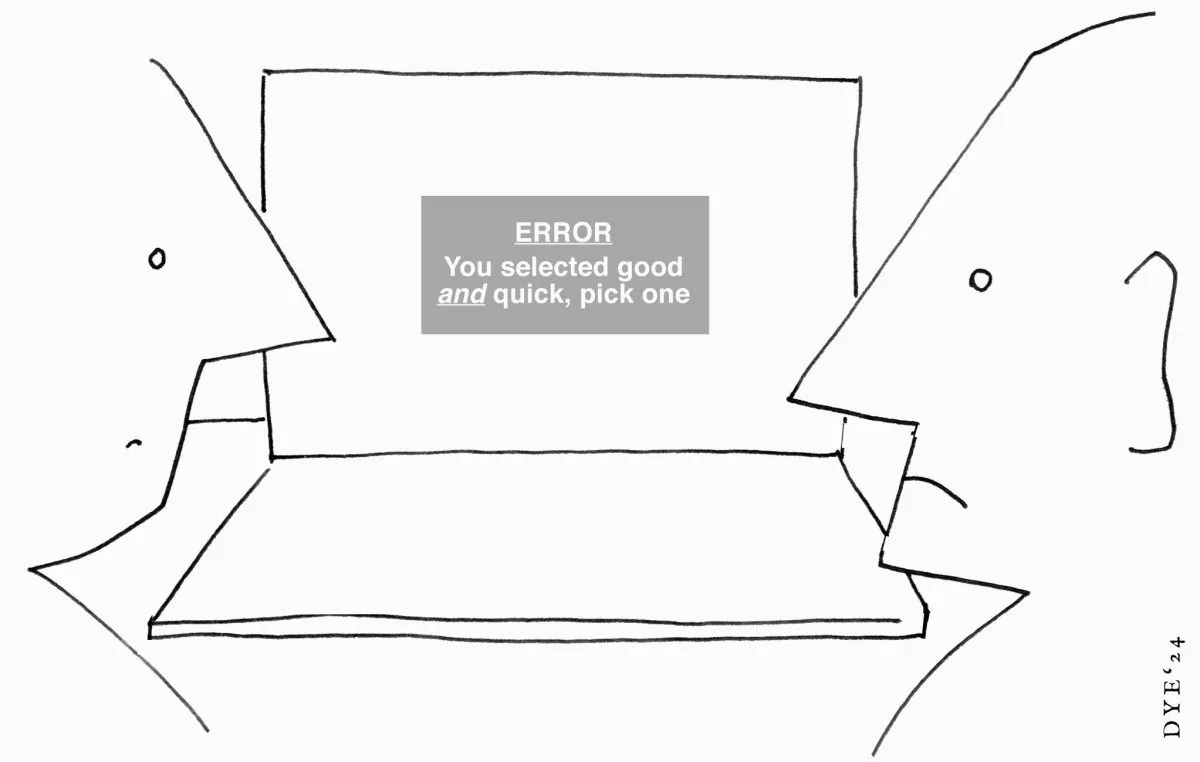
Because people know it can be done in ten minutes they have to weigh up whether it’s worth going through all those stages to get it good, or, whether to get it double-quick and half the price to get it ‘not bad’.
Which is a shame.
Because most choose the latter.
But the difference between good and bad creative work is the thinking, not the tools.
The Mac offers you a billion options – picking the right one is the tough bit.
Worrying about the wording whilst cycling home, seeing a TV show that inspires you to change your casting brief, or simply having second thoughts that your idea isn’t good enough can’t happen instantly.
How many times have you a presentation cancelled and ended up changing the work for the better for the rescheduled meeting?
Tools help, but thinking is the No. 1 ingredient in good work.
No. 2 is instinct, that idiosyncratic thing that leads to us making decisions.
I could have the finest sable paintbrushes and a giant set of the best oil paints on the planet, but Picasso, with a stick and a bucket of mud would create better art.
AI will be the same as the Mac, it’ll help 1% of people create better work and take time and money away from the other 99%.
Will clients want to wait and pay for agencies to put in a bunch of prompts into some AI platform when they could do it now and for free?
Being able to press the buttons is all very well, but the difference between good and bad results are the decisions made by the human being pressing the buttons.
You can’t prompt AI to give you ‘A Saul Leiter style portrait’ if you’ve never heard of Saul Leiter.
And if you have, you have to make a call on whether he’s right for your idea.
Is he a good fit for the brand tonally?
Better than the other bazillion photographers out there?
His vibe is cool, but would it ‘pop’ outdoors?
But humans are more expensive than software licences.
So ultimately, its low cost and convenience will replace rigour and quality.
Not in every case.
But enough to crater the jacuzzi market.
Featured image: Pexels / Artwork on this page: Dave Dye
